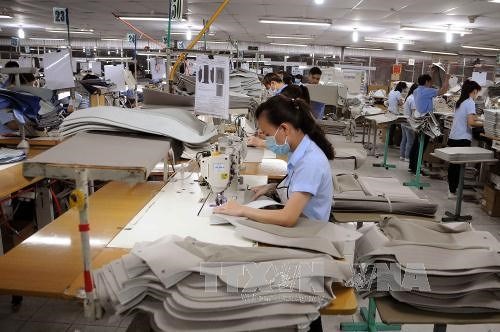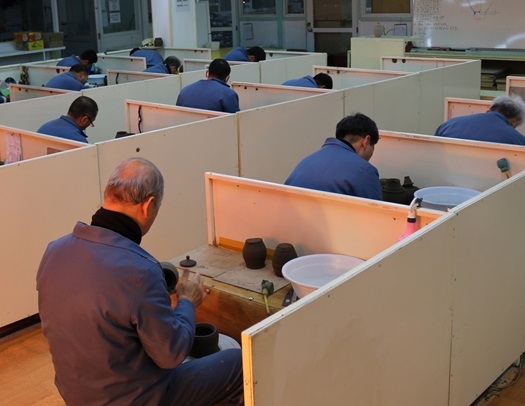 Economy
Economy

A dramatic change in market trends and the "fourth" industrial revolution are forcing Vietnamese enterprises to gradually apply new technologies to production.
 |
| A dramatic change in market trends and the "fourth" industrial revolution are forcing Vietnamese enterprises to gradually apply new technologies to production.— VNA/VS Photo An Hiếu |
HÀ NỘI — A dramatic change in market trends and the "fourth" industrial revolution are forcing Vietnamese enterprises to gradually apply new technologies to production.
Using the technology, businesses can increase their value. Many Vietnamese companies have started to invest in machines with modern technology to automate many production stages to increase productivity, improve quality and save time and money.
According to the Việt Nam Leather, Footwear and Handbag Association (LEFASO), leather footwear has been a key industry in Việt Nam for many years, creating jobs for more than one million workers nationwide.
The export turnover of leather and footwear reached more than US$16 billion last year. Turnover is expected to reach $17 billion this year, a year-on-year increase of more than 10 per cent.
The world trend is changing and the new industrial revolution has made a dramatic change in terms of labour productivity and science and technology.
Low labour cost is no longer an advantage, it is gradually moving to knowledge economy.
According to leather workers, many big companies in Việt Nam have invested in machines, moving to automation.
Việt Á Châu Investment Development Corporation in HCM City is investing in technology to meet development requirements.
The corporation has invested in scanners and 3D printers to serve moulding. The investment has helped businesses reduce time to 10 days for moulding -and to significantly reduce delivery time.
TBS Group has been equipped with a large amount of new machinery for sample development and production. They include programmable sewing machines, computerised embroidery machines and laser cutting machines to automate production stages.
This helps the company reduce costs, increase labour productivity and reduce worker risks in several production stages.
According to experts, while the labour productivity of domestic enterprises is only four to six pairs of shoes per person per day, those of foreign-invested enterprises has reached 16-18 pairs a day and is expected to increase to 20 pairs next year.
This difference has cost domestic enterprises big losses compared to foreign enterprises in terms of export turnover and added value. Bnews.vn quoted Phan Thị Thanh Xuân, the footwear association’s secretary, as saying that modern management methods and technology would solve the problem of labour productivity and the growth of the footwear industry.
This investment required a lot of capital, but it would improve productivity and improve product quality, she said.
Nguyễn Đức Thuấn, association chairman, said that it was important to improve the quality of human resources as well as strengthening the application of science and technology in production.
Despite the high export turnover, the value of the footwear industry is still low, accounting for only 20-25 per cent of the value chain.
Limitation on research and development has been a difficult problem for Vietnamese enterprises. Only by taking the initiative in research and development, Vietnamese enterprises can increase their value over the whole value chain.
Recently, the Italian Trade Agency and the shoemakers’ association inaugurated the Italy-Việt Nam Footwear Technology Centre at the Lefaso Centre in the southern province of Bình Dương.
Italy will assist Vietnamese companies improve product quality through technology transfer, consultancy and training of human resource.
The centre is equipped with modern machinery and equipment imported directly from Italy and other European countries, allowing small and medium-sized enterprises in the leather-footwear industry to approach, research and develop new products. — VNS




